Studio apartments have a certain charm to them especially if you are drawn to the idea of open plan layouts and quick accessibilty of different sections in your home. The reality, however, is that it can be a constant juggling act of sacrificing your style for practicality, utilizing the space well enough that it does not feel cramped and always keeping things tidy (’cause guess what? Your guests can see everything!). The good news is that with a little creativity and planning you can keep the apartment organized, uncluttered, spacious and well maintained and that is why this article is for you. These 32 ideas are a definite guarantee to help you stay on top of things in your studio apartment.
1. Use bookshelves or storage units as room dividers. This not only provides separation but also maximizes storage space.
:max_bytes(150000):strip_icc():format(webp)/Book-shelf-room-divider-studio-apt-spruce-587fd7f33df78c2ccde5d83a.jpg)
2. Raise your bed to create a workspace or storage area underneath, especially if you have high ceilings.
:max_bytes(150000):strip_icc():format(webp)/7-Loft-Bed-Doubles-Your-Space-58767f025f9b584db3aa1d56.jpg)
3. Use low furniture to create a lighter look that doesn’t visually crowd the room.
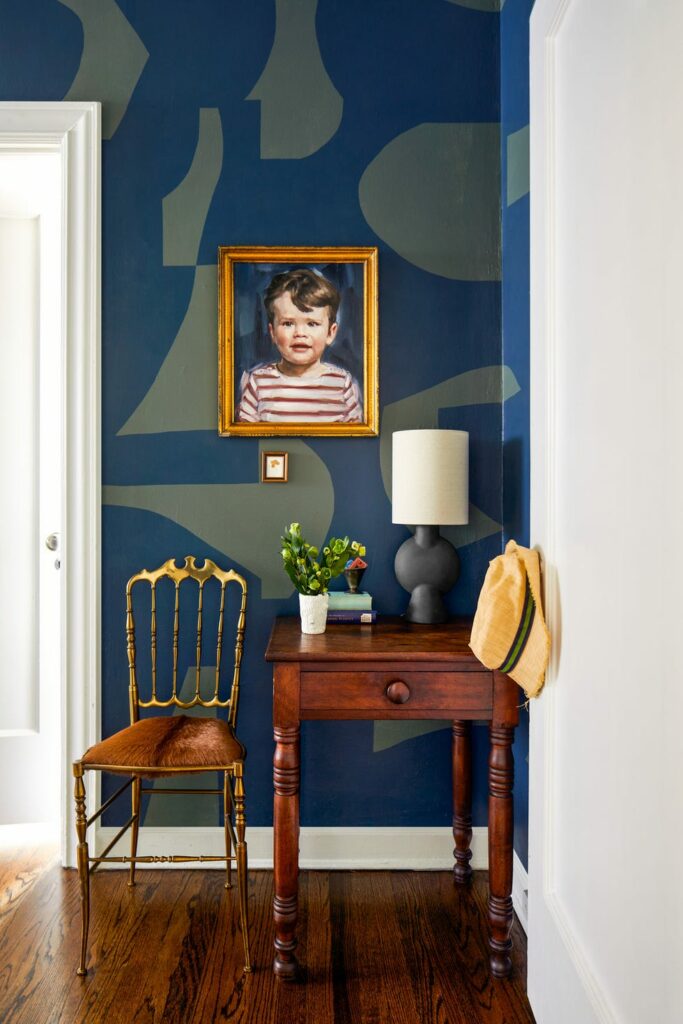
4. Use rugs to anchor specific areas, creating separation without using bulky partitions.
:max_bytes(150000):strip_icc():format(webp)/DesignedbyEmilyHendersonDesign_PhotobySaraTramp-Ligorria_19-6276ad175c8e4ac2abf260d8fa3ac08b.jpg)
5. Hang large artwork to elongate walls and draw the eye upward, making ceilings feel higher.
:max_bytes(150000):strip_icc():format(webp)/6IbCQmDI-2fae6f388076444a93879a024f4a3e04.jpeg)
6. A mounted floating desk can delineate an office zone without taking up extra floor space.

7. Stick to a few larger statement pieces instead of many small decorative items.
:max_bytes(150000):strip_icc():format(webp)/rsw1160h1476-7c66ed3806a749479030dc99b2e4448b.jpeg)
8. A Murphy bed that folds into the wall or a sofa bed can free up floor space during the day, creating more room.

9. Place cabinets or shelving close to the ceiling to store less-used items.
:max_bytes(150000):strip_icc():format(webp)/p-1622fa067b29459b8f12c359847f26db.jpeg)
10. Layer the ceiling lights, floor lamps, and table lamps to create different moods and expand the feel of the room.
:max_bytes(150000):strip_icc():format(webp)/Stocksy_txp3d216bb1tUq300_Medium_4976989-26e005a7cdad4c2e9d5b11e82a2f34ae.jpg)
11. Avoid clutter by choosing a minimalist style with fewer decorative items that also have function.
:max_bytes(150000):strip_icc():format(webp)/Cut-a-Rug-Studio-Apartment-58792dbd5f9b584db331c8dc.jpg)
12. Hang curtains high and wide to elongate windows, making the room feel taller.
:max_bytes(150000):strip_icc():format(webp)/rsw2320h1548-aafef038b55e4ca5ac3f2ed49337971a.jpeg)
13. Replace swing doors with pocket doors to save floor space.
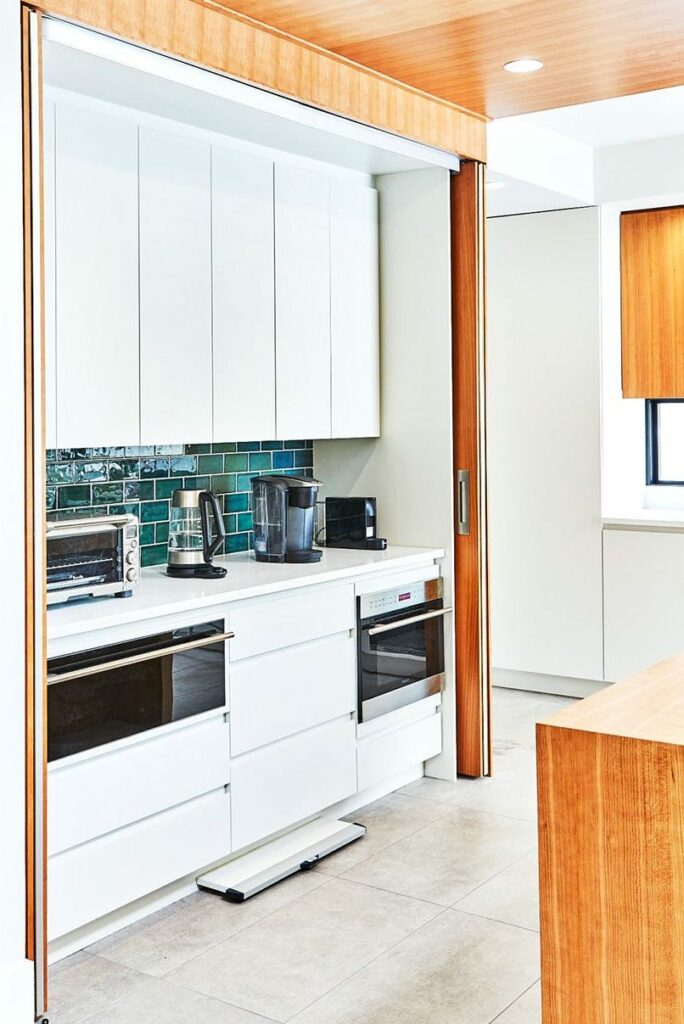
14. Light colors like white, cream, and pastel tones can open up the space and make it feel airy.
:max_bytes(150000):strip_icc():format(webp)/NavyYard-043-d076325bcf1e41e4ad3a4cc11e9e97dd.jpg)
15. Use creative murals or wall art project to give the space a focal point.
:max_bytes(150000):strip_icc():format(webp)/Shebaco_ZFD_04189_1-e9c5d4df17894bf88838707f22233783.jpg)
16. Build a half wall to separate spaces while maintaining the flow of light and air.
:max_bytes(150000):strip_icc():format(webp)/thespruce-studioroomdivider-in4mal-a26c7a62d2c5489592b39babe32a18b4.jpg)
17. Invest in furniture with hidden compartments such as coffee tables, side tables, or sofas.
:max_bytes(150000):strip_icc():format(webp)/modern-living-room-602984871-5b368beac9e77c001a5a087b.jpg)
18. Use sofas or desks to create natural boundaries between different zones.
:max_bytes(150000):strip_icc():format(webp)/Boutique-hotel-Room-Studio-Apartment-Ideas-587c08153df78c17b6ab82ca.jpg)
19. Install sliding fabric or glass panels to temporarily close off spaces like a bedroom or office area.

20. Hang curtains or beaded strings from the ceiling to softly divide areas without blocking light or air.
:max_bytes(150000):strip_icc():format(webp)/review-curtain-studio-587ea5b85f9b584db35e7cc9.jpg)
21. Opt for lightweight dividers like folding screens, or Japanese shoji screens for flexible separation.
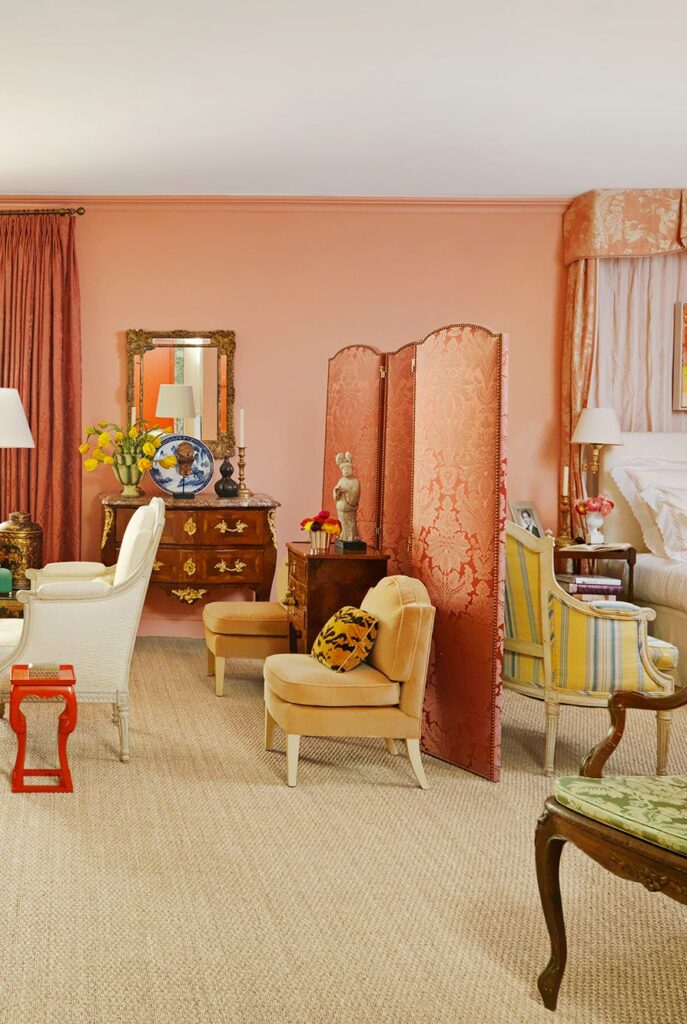
22. Choose collapsible desks, chairs, or tables that can be easily folded away when not in use.
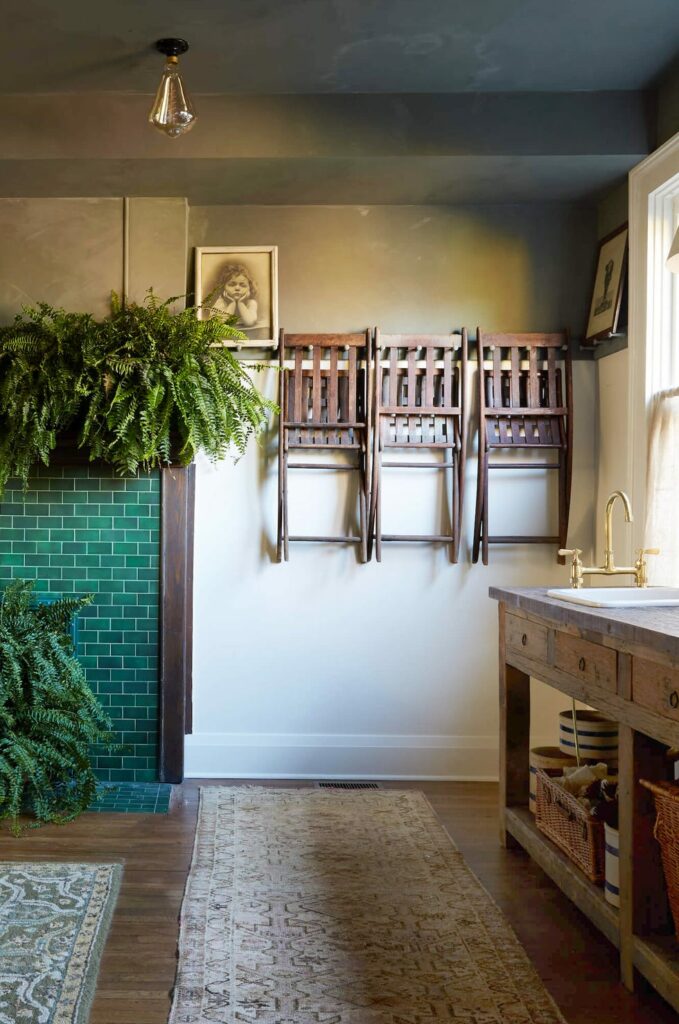
23. Use hooks on walls for hanging bags, jackets, or kitchen utensils.
:max_bytes(150000):strip_icc():format(webp)/DesignedbyJessBungeforEHD_PhotobySaraTramp_4-f475d0fcd88947da8bf18f86d703485b.jpg)
24. Leave the windows unblocked by furniture to let in all the natural light and give the illusion of space.
:max_bytes(150000):strip_icc():format(webp)/NYC-Micro-Apartment-Studio-Apartment-58793de85f9b584db345c854.jpg)
25. Use large potted plants or a vertical garden as a natural divider between living spaces.
:max_bytes(150000):strip_icc():format(webp)/Have-it-all-studio-apartment-587e9d153df78c17b6d4f076.jpg)
26. Use different color schemes or accent walls to visually separate areas without the need for physical barriers.
:max_bytes(150000):strip_icc():format(webp)/NevaInteriorDesign-0c9fbd513a82493abcd7b53b97282817.jpeg)
27. Tall shelving units can store books, decor, and essential items without taking up floor space.
:max_bytes(150000):strip_icc():format(webp)/highres_006_8636-07d0f40ed6364b62a75cd251e8344337.jpg)
28. Choose multi-functional storage furniture such as trunks or ottomans that convert to coffee table or seats.
:max_bytes(150000):strip_icc():format(webp)/highres_011_8663-c13321691b37440db3f7478e199a5f43.jpg)
29. Consider placing large mirrors opposite windows to reflect light and create the illusion of more space.
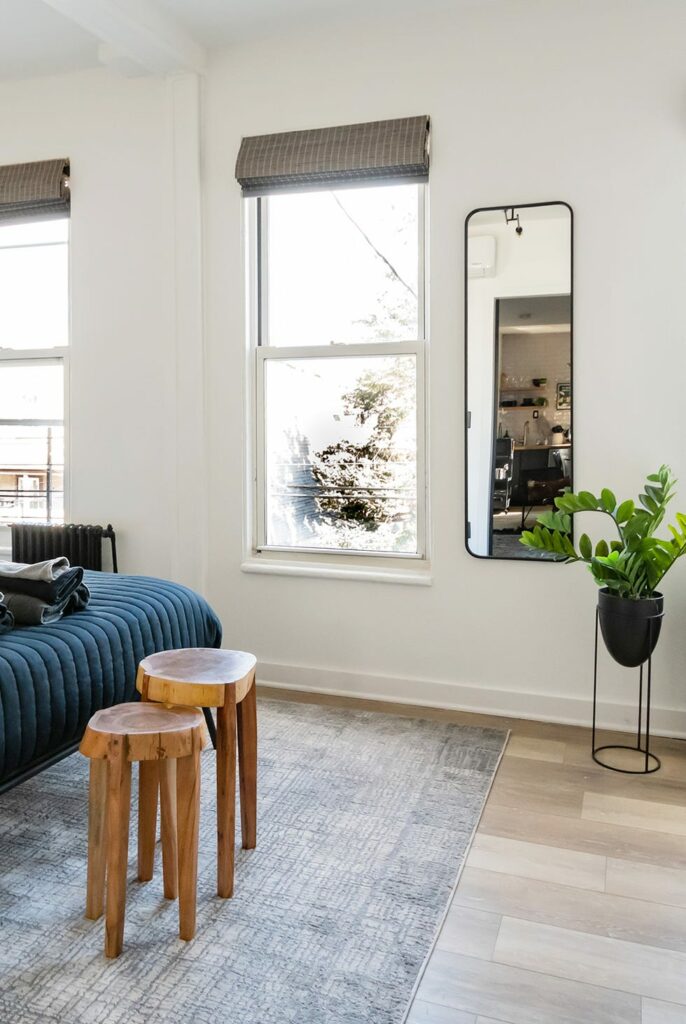
30. Use hanging racks for pots, pans, utensils to free up drawers and make items more accessible.
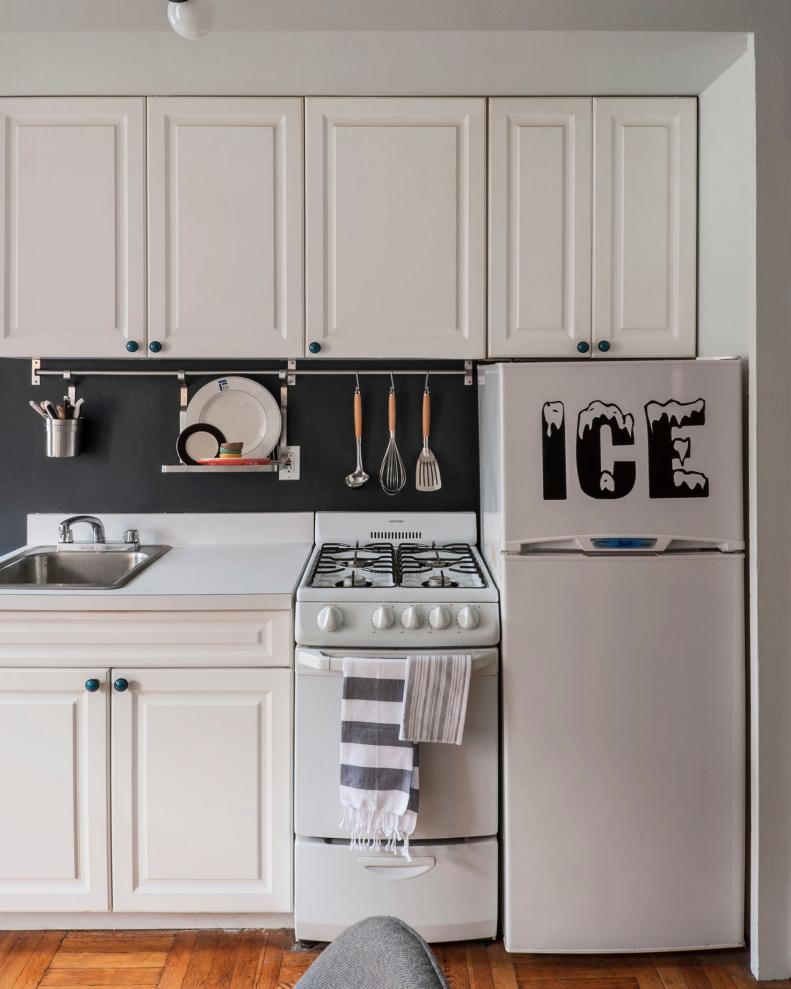
31. Add storage solutions to the backs of doors (e.g. shoe racks, towel holders, or storage pockets).

32. Install shelves in corners that would otherwise go unused for books or decorative items.
:max_bytes(150000):strip_icc():format(webp)/Sredzkistrasse-prenzlauer-berg-berlin-breakfast_0-9cd56506eecb4f4aad37d460bbfe92ad-f91732bfe9d24066822006ab29378689.jpg)
